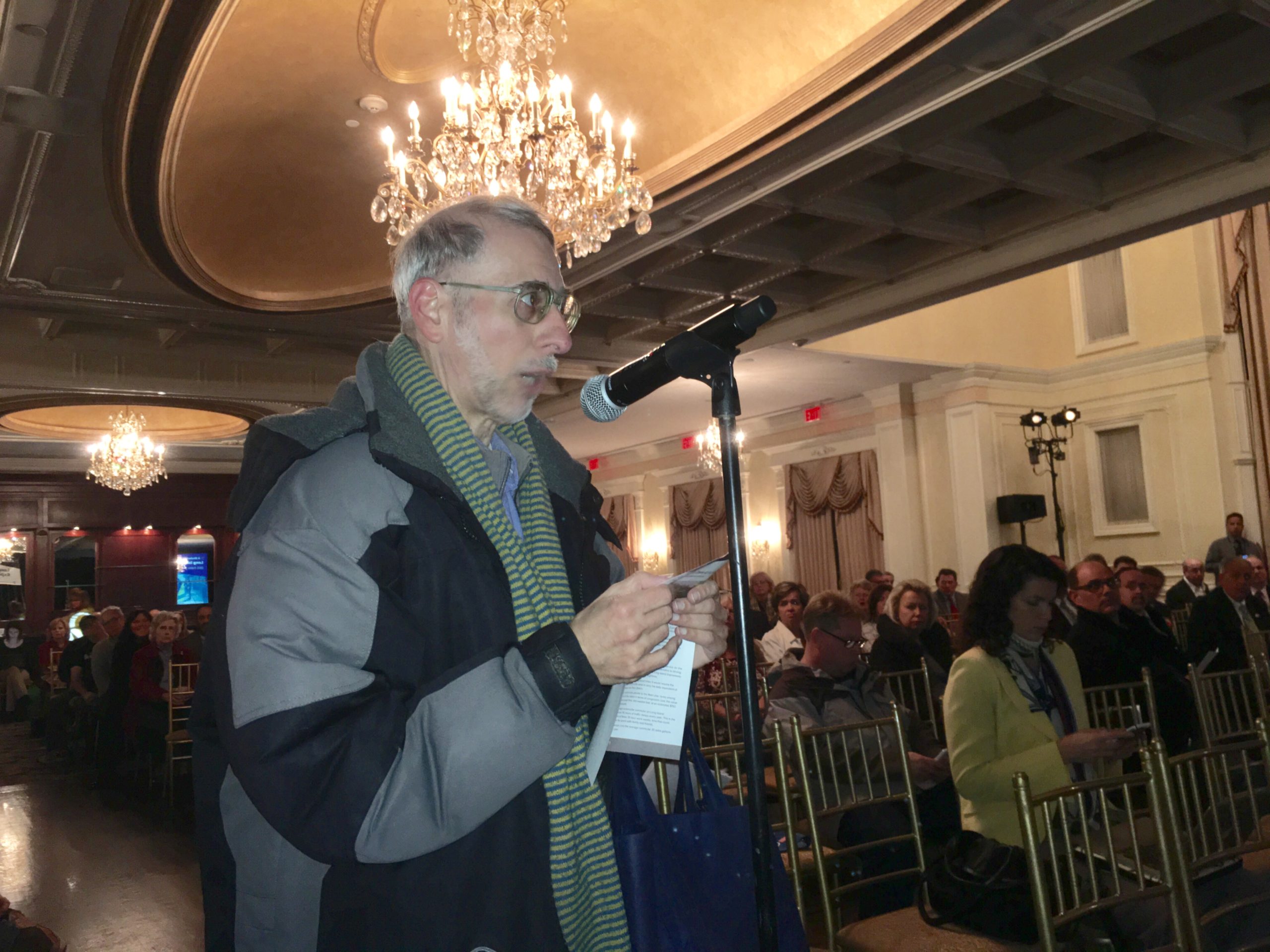Nearly three dozen local residents and public officials spoke out against the Long Island Rail Road’s proposed third track Thursday night at a public hearing in New Hyde Park, maintaining opposition in areas the project would most directly impact.
The 35 critics accounted for most of the skeptics at this week’s six hearings in New Hyde Park, Westbury and Uniondale. About 80 of the 112 speakers at the first five hearings supported the project, while about 30 opposed it.
The opponents, nearly all of whom came from New Hyde Park, Floral Park and Garden City, said they remain skeptical of the justification for the $2 billion project and repeated calls for more basic LIRR infrastructure improvements before the third track is built.
“Floral Park is a wonderful community. Building this third track could ultimately change the valuable enclave forever,” Michael Jakob, president of the Floral Park Chamber of Commerce, said at the hearing attended by about 150 people.
The LIRR wants to install a third track along a key 9.8-mile stretch of its Main Line between Floral Park and Hicksville, which it estimates would take three to four years.
Gov. Andrew Cuomo announced the project last January and has distinguished it as less invasive than a plan proposed in 2005. It would be built entirely within the LIRR’s property lines and would not permanently take any residential property.
This week’s hearings on the draft environmental study for the project were required under state eminent domain law because it would take four commercial properties and temporarily use parts of several residential properties during construction.
The LIRR says a third track would provide more reliable service by giving trains a way around accidents on the two-track “bottleneck,” which currently cause delays to ripple throughout the system. It would also create more capacity for eastbound trains during morning rush hours and westbound trains in the evening.
Ten project supporters Thursday night said the third track would be a desperately needed aid to commuters and would lay the groundwork for economic growth across Long Island.
Bruce Stillman, president of Cold Spring Harbor National Laboratory, said an improved railroad would create jobs across the Island and help the prestigious science research lab attract more young talent from the New York City area.
“This is a classic case of doing the greatest good for the greatest number. It must be built,” said Andrew Sparberg, a former LIRR quality assurance manager from Oceanside.
But opponents questioned the project’s necessity when switch problems or broken rails are among the most common causes for delays. The LIRR should upgrade switches, signals and existing rails first, they said.
Local residents also criticized the fast-moving process, saying there has not been enough time to digest the environmental study’s more than 2,000 pages, which some said did not contain detailed answers to important questions.
The impact of construction and increased train traffic on communities along the corridor remained a major concern among critics, who say the project would cause traffic and noise problems and irreparably damage their quality of life.
Most critics praised the planned elimination of the seven street-level railroad crossings along the corridor, but said they should not be tied to the third track.
“That’s a life-and-death issue, and it’s shameful that it was held hostage for the third track,” Jim McHugh of New Hyde Park said.
The comments at Thursday’s hearing reflected a geographic divide on the project.
Most opponents came from communities in or near the project area in central and western Nassau County, while most supporters came from parts of Nassau further from the Main Line or from Suffolk County.
Only two speakers came from Mineola, home to a busy LIRR station at the center of the Main Line corridor.
Tom Redmond, a Mineola resident and volunteer firefighter, said the project would help the many village residents who commute to Manhattan, including those in its new downtown apartment complexes.
“There’s no panic in Mineola at all, and that’s why a lot of the residents aren’t coming out, because we’re ready for the third track to come through Mineola,” Redmond said.
Tom Prendergast, the Metropolitan Transportation Authority chairman and CEO, has said incremental upgrades to switches and signals would help LIRR service in conjunction with a third track, but are not a viable alternative to the project itself.
Five people made neutral comments Thursday night asking questions or requesting additional improvements along the corridor.
Matthew Sexton, a Floral Park civic leader, said the project should include fixes and handicap-accessibility upgrades at the village’s train station, which has been called the “gateway” to Nassau County.
“The train station is 57 years old and it really looks more like the gates of Rome after the Huns got done pillaging it,” Sexton said.
Third track planners will incorporate the comments into a final environmental impact statement to be released later this year before construction starts.
Planners have touted their public outreach efforts, which have included consistent meetings with local officials and community leaders.
Anyone can submit comments on the project until Feb. 15 by mail, online at amodernli.com or at the project information center on the south side of the Mineola LIRR station.



